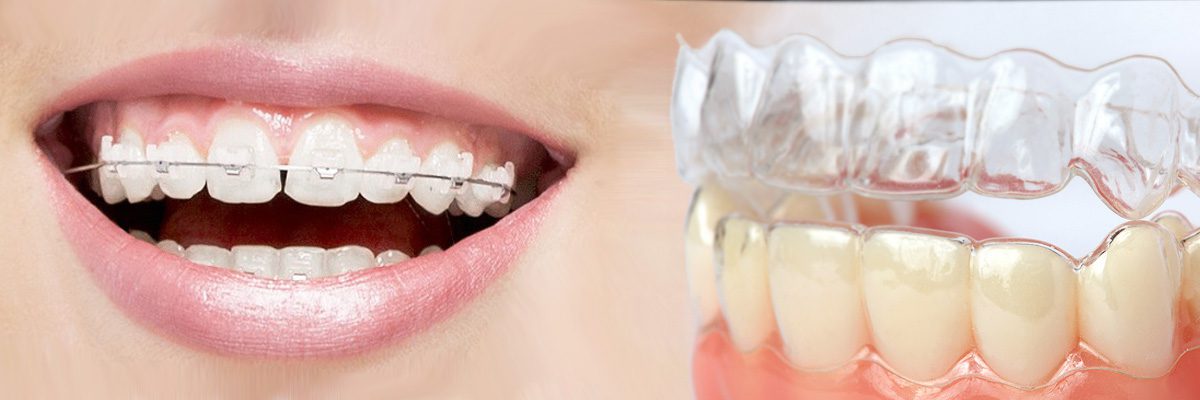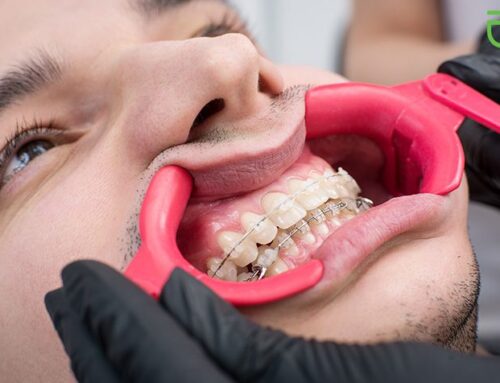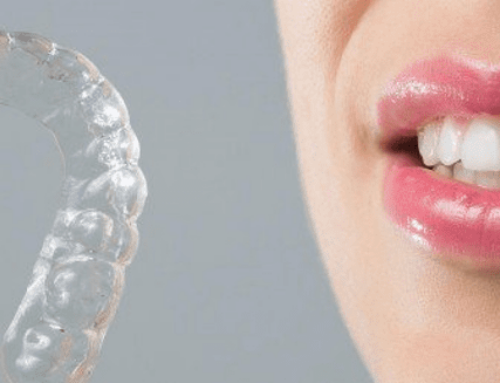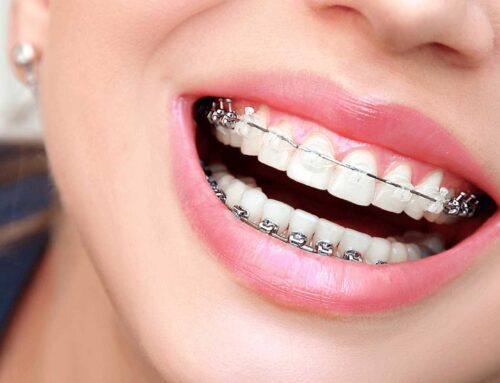Invisalign versus Metal & Ceramic Braces
Whether it’s your choice or a dentist’s recommendation to get braces, you must decide which kind are best for your smile and lifestyle. It used to be that the only choice was cumbersome and unsightly metal braces. Now, you can opt for an improved version of metal braces or ceramics braces or a truly innovative set of clear aligners called Invisalign. You even have the option of a Fast Braces treatment, offered exclusively by Georgian Dental®.
This is a big decision. You need to consider every factor, including treatment duration, cost and your own comfort level. The goal is to get your teeth straight and your oral health in order with the least amount of disruption to your daily life. Additionally, we’d like to make you feel more comfortable and at ease with your braces diagnosis. Done correctly, they are a worthwhile and life-changing treatment.
To start, let’s perform a side-by-side comparison of braces and Invisalign. We’ll review lengths of treatment, cost and make sure you are aware of certain situations where Invisalign will not be an option.
Types of Braces
What started as awkward fitting headgear and a mess of wires has evolved into braces that are smaller, less visible and considered to be generally more comfortable. Best of all, patients can choose what material will be used to reposition their teeth and reshape their smile.
One popular option for younger patients with growing jaws is metal braces, which effectively close gaps and repair overcrowding, overbites and underbites. Besides feeling heavier than ceramic ones, metal braces tend to cause patients to feel self-conscious. The current versions help remove some of the stigma by being flatter and smaller and are a popular choice among orthodontists because they have a high success rate.
Another option is ceramic braces. These offer the same treatment duration and efficiency as metal braces without the unbecoming presence of metal on your teeth. Ceramic braces are highly functional but are often used in combination with metal to increase durability. Adults tend to prefer ceramic because they are less of a hindrance to one’s social and professional life.
There are also self-ligating braces, characterized by not requiring elastics and resulting in fewer appointments and less maintenance. Then, there are lingual braces, which are “hidden” behind the teeth and shaped so that they remain invisible. These are a popular option with models, actors or those whose job requires a lot of public speaking. Lastly, patients have the option of gold braces, which have all the benefits and drawbacks of traditional metal ones along with the unique aspect of being coated in gold.
Barrie Dentist, Dr. Tan, has created a unique method called Fast Braces. This treatment utilizes subsonic wave therapy and photo-therapy in conjunction with a specialized bracket and wire technology. Fast Braces are perfect for patients who are upset with their diagnosis and want to speed through treatment without compromising results.
Invisalign
Invisalign has been one of the most impressive additions to the world of orthodontics. They are clear and removable aligners that every week move teeth closer into the final position determined by your orthodontist.
Because they are removable, patients can enjoy many of the foods that are barred for braces wearers like popcorn and gum. Additionally, you can maintain overall oral health by keeping your brushing and flossing routine.
These have no equal when it comes to minimizing disruption to a patient’s life.
Length of Treatments
With respect to traditional braces, treatment duration can vary based on the individual case. Generally, patients must wear traditional braces for about two years. There are certain situations that call for braces to be worn for only one year and some that require closer to three years. This will be one of the first things your orthodontist will go over with you.
Patients who are children or teenagers tend to achieve results faster than adults because their jaws are still developing. Additionally, if gaps or issues related to overcrowding are minor, treatment duration should be truncated, potentially to under a year. The more severe cases might eclipse two years. Don’t forget that a patient’s commitment could shorten or elongate treatment. For instance, if they attend regular orthodontic appointments, adhere to oral hygiene best practices and follow their orthodontist’s instructions they could find themselves out of braces sooner.
Invisalign treatments also vary based on the needs of the patient. Typically, a treatment runs 15 months during which time 18-30 aligners will be customized.
Treatments with traditional braces should conceivably take longer than Invisalign but this is something your orthodontist should determine based on your needs and desired outcome.
Total Treatment Costs
There is no set cost for braces. The amount is determined by individual practices and based on labour, materials and severity of the patient’s dental issue. Where you live could also determine cost as practices in Downtown Toronto typically charge more for the same service than one in Barrie.
Here are some figures to give you a general idea:
- Metal braces: $3,000-7,000
- Ceramic braces: $4,000-8,000
- Lingual braces: $8,000-10,000
Invisalign, on the other hand, are similar to ceramic braces and can range from $4,000-7,400. At Georgian Dental®, we offer flexible payment plans to make sure you get the care you need. We also offer a discount if payment is received in full by cash or check, we are happy to arrange payments in conjunction with your flex plan and we accept most major credit cards.
We even offer dental financing for braces, with low interest rates that are competitive with other lending options.
Even the most inexpensive braces can still be relatively pricy. Remember, anything that straightens your teeth, improves your confidence and enhances your oral health is an investment in both your well-being and your future.
Is Invisalign Always an Option?
We understand the appeal of Invisalign as it can effectively straighten teeth in a manner that is inconspicuous. Just because Invisalign is a revolutionary and popular orthodontic treatment doesn’t mean it’s the right fit for everyone.
The biggest hurdle to being a candidate for these clear aligners is the severity of your case. For those ranging from mild to moderate, Invisalign can treat:
- Gaps in teeth
- Overcrowding
- Overbites, crossbites and underbites
Age is also a factor. Invisalign can be an effective treatment for teenagers and adults but children and pre-teens should only proceed with treatment if given the greenlight by their orthodontist.
If you are eager to determine if you’re an Invisalign candidate, you can use their Smile Assessment Test. By filling out the fields, including what you hope to achieve from treatment, the test will decide if you should consider Invisalign. This test should not supersede your orthodontist’s opinion.
While the patient gets to choose which option best suits their needs and lifestyle, an orthodontist will determine if Invisalign is even plausible. Some patients must accept that there are more appropriate treatments, which usually mean metal or ceramic braces.
Do You Need Braces?
We can help guide you through the process of deciding if you should choose traditional braces or clear aligners and what each option entails with respect to length, cost and results. The first step, though, is to come speak with us.
We offer a free, no-obligation braces consultation where we will happily answer your questions and share our expert opinion on the best treatment route for your case.
Appointment Request
If you’re interested in any of our procedures, and would like to meet with one of our dentists to discuss options, costs and get additional information, complete this short form and we’ll give you a call to arrange for a no-obligation appointment at our Barrie clinic.










